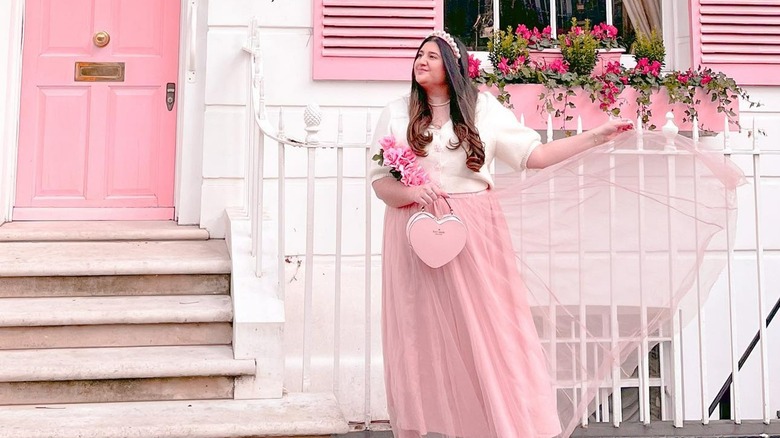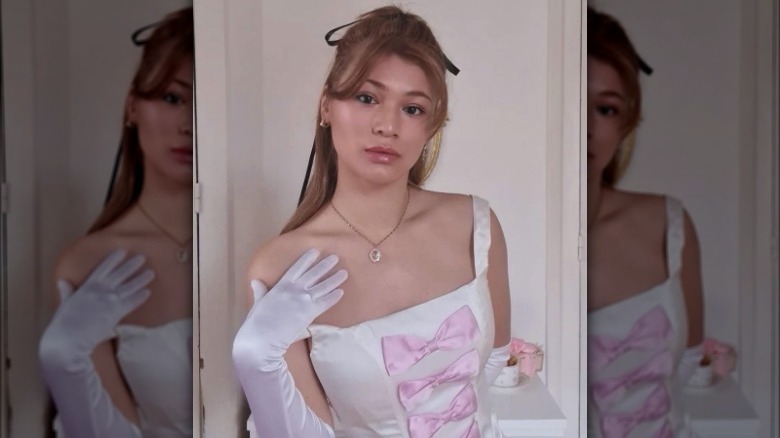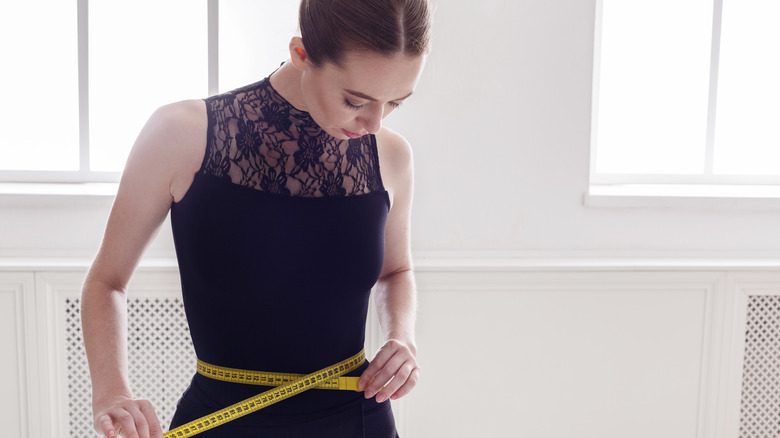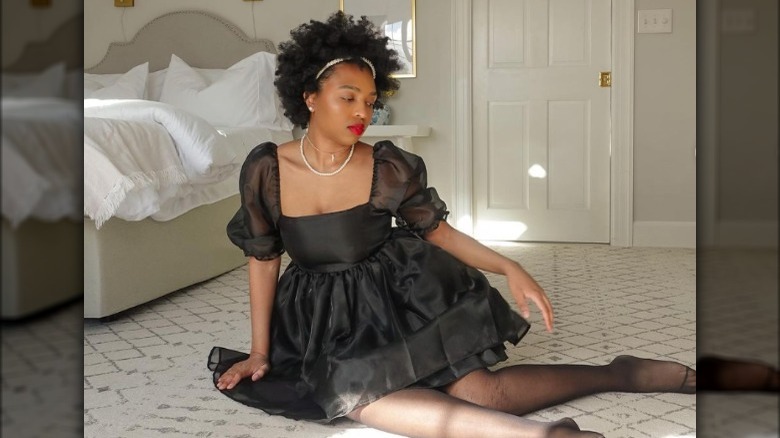Balletcore Is The Aesthetic Du Jour In 2023, But Ignoring Its Complicated History Comes With A Price
Balletcore is the latest trend to take over both the runways and the sidewalks. As the name implies, the sophisticated style derives its aesthetic heritage from the look of a ballerina, with an emphasis on tulle, bodysuits, wrist and leg warmers, wrap-tops, and ballet flats, all washed in soft pastels of pink and lilac. "Balletcore explores über femininity, body, movement, nostalgia culture, and comfort," stylist Olivia Ivey Bannock explained to The Zoe Report. What used to be solely garb for the dancers has now become part of a growing trend of combining beauty with ease and practicality, thanks to the sleek, athletic style so identifiable from ballet.
In no time, designers have jumped all over the trend; look no further than Miu Miu's array of ballet flats, or the array of ballet-inspired garments at Zara as evidence. However, while the look is compelling, its sudden explosion in popularity has drawn some criticism. Some have pointed out the glamorous aesthetic conveniently hides the harsh realities endured by those who are actually part of the ballet world. Others say it romanticizes outdated and harmful beliefs about body image.
Although balletcore in and of itself is just clothing, that doesn't mean its existence doesn't come with implications. Fashion, after all, is never just born out of thin air. That doesn't mean a person cannot try some new leg warmers if they want. However, before diving into promoting the trend here are some things to consider.
Ballet's exclusivity has lead to toxic practices
While ballet embraces grace, beauty, and athleticism in one — and this is no easy task — maintaining that image has come at the cost of enabling exploitive practices that damage its participants. Because ballet is such a grueling, demanding dance form, young girls entering the world can face a level of scrutiny and discipline that wreaks havoc on their self-esteem. Former dancer and licensed social worker Kimberly Hershenson told Romper, "Anything that has a competitive element — dance, gymnastics, even sports — if you have a coach who's not being loving and supportive, it's very easy to internalize it, and think there's something wrong with you. That you're not good enough."
It's worth noting the elite perception of the ballet as a dance form hinges on young girls not feeling "good enough" and in many cases, not rich enough to gain full access. The expense required to pursue ballet seriously or even watch it means that many simply cannot participate in a way that would lead to success. In holding up a fashion that is inspired by this, it begs the question of whether we are then participating or romanticizing it.
Critics argue this toxic appeal is already baked into aesthetic of balletcore. Author Chloe Angyal told Jezebel, "Because ballet is a sort of shorthand for refined upper-class, effortless, athletic femininity, it's not surprising to me that brands want to tap into that, grabbing the convenient and appealing parts of ballet and ignoring all the rest of it."
Ballet's concerning connection to body image issues
The appeal of balletcore is its enhancement of the lithe, disciplined body. This fashion foundation isn't far off from one of the major problems in ballet's history. The body is everything for a dancer, and the thin body is regarded as the key to success. Therapist Samantha Drazin told Romper, "You teach [dancers] that their self-worth is bound in the shape of their shoulder-blades, or how much fat you can pinch on their back ... It extends beyond just the abuse in the studio. It has lifelong consequences." Among those consequences is the fact that disordered eating is rampant in dancing communities. The Journal of the Eating Disorders Association published a study noting that dancers were three times more likely than the general population to suffer from eating disorders like anorexia and called for specific support among those groups. Chloe Angyal told Jezebel that the rise of balletcore risks the possibility of promoting this lack of "bodily agency" and that it would be irresponsible to consume an aesthetic so steeped in this without at least acknowledging it.
Some social media users are pushing back against this by reframing what balletcore can look like. TikTok influencer moeblackx styles balletcore in a size 20, pushing out the notion that the aesthetic is only for the thin physique.
If you need help with an eating disorder, or know someone who is, help is available. Visit the National Eating Disorders Association website or contact NEDA's Live Helpline at 1-800-931-2237. You can also receive 24/7 Crisis Support via text (send NEDA to 741-741).
Racism remains a problem in ballet spaces
In recent years, many have called out ballet for its history of internalized racism. Former dancer Theresa Ruth Howard, who created the archive "Memoirs of Blacks in Ballet," told Marie Claire, "When we talk about the ballerina, we're talking about the ideal, our stereotype of the desirable woman, and that is reserved for white women." That "ideal" has persisted for decades and continues to impact dancers to this day. Black ballet dancer Chloé Lopes Gomes revealed to NBC News that her experience in elite European ballet circles was "closed and elitist," noting that it was not a welcome space for people of color. When she performed "Swan Lake," she was asked to wear white makeup, and in other instances, was told to straighten her curly hair. "I felt very humiliated and very alone," Lopes Gomes shared. Eventually, Berlin's Staatsballett ballet company did not renew her contract.
In light of this, some argue that balletcore and the celebration around it ignores how the industry is lagging behind with representation and social values. Chloe Angyal told Jezebel, "We also need to notice what else we're being sold when brands borrow from ballet. Ballet is diversifying, but it's still an extremely white art form, and in many ways it's synonymous with white hyper-femininity. And when fashion borrows from ballet, it's often borrowing that aspirational whiteness, too."



